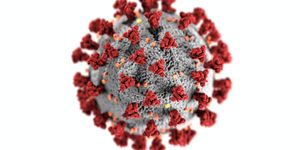How big of a threat are pollutants to our drinking water?
A study published recently in the journal Proceedings of the National Academy of Sciences (PNAS) analyzes the speed at which pollutants reach groundwater supplies in karst areas, a topography of underground drainage systems formed by the weathering of soluble carbonate rocks. Approximately one-quarter of the global population depends on karst areas for drinking water.
The investigation was carried out by an international team led by Junior Professor Dr. Andreas Hartmann of the Chair of Hydrological Modeling and Water Resources at the University of Freiburg. Dr. Hartmann and his colleagues wanted to compare the time it takes water to seep down from the ground’s surface to the subsurface with the time it takes for pollutants to decompose in karst areas in Europe, North Africa, and the Middle East.
The researchers were drawn to this topic because of the lack of knowledge regarding the influence that pollutants in karst areas have on drinking water. Karst areas are categorized by the presence of cracks or fissures in topographical features, but scientists still don’t fully understand how pollutants like pesticides, pharmaceuticals, or pathogens move through those cracks, and therefore the threat to potable water is largely unknown.
The team used a continental-scale model to quantify the risk from pollutants. “We show that focused recharge is the primary reason for widespread rapid transport of contaminants to the groundwater,” write the authors. Their simulations showed that up to 50% of pollutants can reach the groundwater table depending on the period of the specific pollutant’s decomposition. This is not only significantly a higher percentage than previously estimated, but, as the authors write, “These results imply that the contamination risk of usable groundwater storages is much larger than expected where fast flow to the groundwater occurs.”
The scientists explain that this is happening due to rapid seepage in areas with thin soils, like those found in the Mediterranean. In such regions, rapid seepage can cause excessive levels of pollutants in the groundwater table during large rain events, which the team says can only be predicted to increase with continuing and increasing industrial and agricultural productivity.
Sources: PNAS, Science Daily








